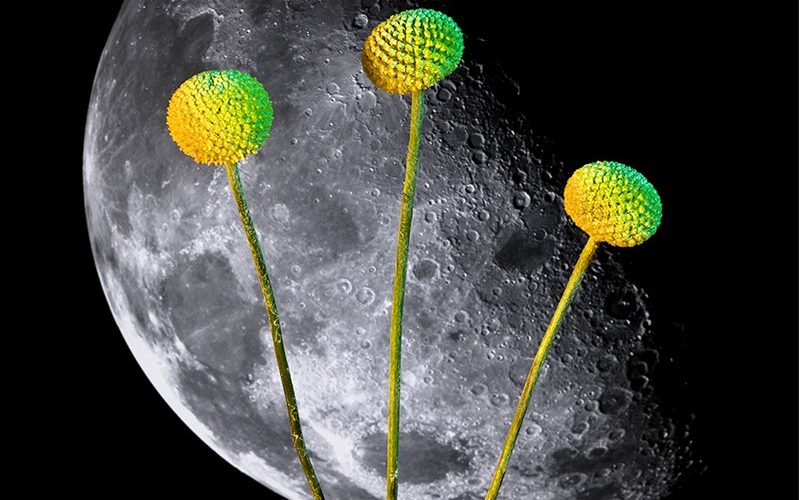Can plants help us explore Mars?

To many, the concept of plant intelligence may sound as paradoxical as that of a deafening silence, since plants do not have a brain. Nonetheless, amongst scientists there is growing excitement around the plant kingdom, and not without reasons. Plants are highly sophisticated organisms which have evolved alternative strategies to solve the very same challenges that animals face routinely: foraging for food, escaping from predators and adapting to the changes in their surroundings. And there is more to it: plants can (and must!) do all these things without running away when things get tough. They are truly resilient problem solvers!
Amongst those who tackle the mysteries of the plant kingdom, the Italian neurobiologist Stefano Mancuso holds some of the most original and controversial ideas1. According to Mancuso, the answer to most of the challenges of modern society can be found in the plant world – you just need to know where to look2. The idea of developing novel technologies from solutions found in plant systems has been termed phytoinspiration and is rapidly growing in popularity3.
Since 2008, the European Space Agency has sponsored feasibility studies on the development of innovative plant-inspired robots – or plantoids – for planetary soil exploration4. In fact, plants have already evolved a sophisticated apparatus for detecting chemical and physical cues: their roots5.
Mancuso and his collaborators speculate that a plantoid encompassing the main features of the root system could represent an attractive alternative to the current drilling strategies. Indeed, the plantoid would provide scientists with a self-sustained device capable of penetrating the surface in a non-traumatic way6. This last characteristic could even help finding evidence of extra-terrestrial life, which may otherwise be damaged by the action of drilling tips7.
But how would these plantoids operate? A first working plan would involve delivering the plantoids in the form of seeds and acquiring information as the roots develop and penetrate the ground8. Of course, the specific challenges that the plantoid would face will depend on the variable conditions of space environments, including factors like atmospheric pressure, temperature and soil composition. For instance, Mars is a relatively mild environment with temperature averages ranging between -87°C and -5°C and the possibility of near-surface water9 10. Under these conditions, a plantoid could potentially grow and survive. On the other hand, the Moon is a truly extreme environment with negligible atmospheric pressures, very low temperatures and a dusty surface to which roots might attach poorly.
In short, plant biology can not only inform agricultural development but holds the potential to inspire novel and unconventional technologies in all fields of science and engineering. So next time you take a walk in the park, pay attention to the green quiet world that surrounds you: it might spark one of your best ideas!
Edited by Frankie Macpherson
References
- http://www.environmentandsociety.org/mml/mancuso-stefano-roots-plant-intelligence
- https://www.lifegate.com/people/news/plant-intelligence-stefano-mancuso
- http://www.environmentandsociety.org/mml/mancuso-stefano-roots-plant-intelligence
- Dario, P., Mancuso, S. et al. (2008). Bio-inspiration from Plants’ Roots. Available at: http://www.esa.int/gsp/ACT/doc/ARI/ARI%20Study%20Report/ACT-RPT-BIO-ARI-066301-SeedBot-PisaFirenze.pdf
- http://www.environmentandsociety.org/mml/mancuso-stefano-roots-plant-intelligence
- Dario, P., Mancuso, S. et al. (2008). Bio-inspiration from Plants’ Roots. Available at: http://www.esa.int/gsp/ACT/doc/ARI/ARI%20Study%20Report/ACT-RPT-BIO-ARI-066301-SeedBot-PisaFirenze.pdf
- Dario, P., Mancuso, S. et al. (2008). Bio-inspiration from Plants’ Roots. Available at: http://www.esa.int/gsp/ACT/doc/ARI/ARI%20Study%20Report/ACT-RPT-BIO-ARI-066301-SeedBot-PisaFirenze.pdf
- http://www.esa.int/gsp/ACT/projects/seedsdispersal.html
- http://solarsystem.jpl.nasa.gov/planets/profile.cfm?Object=Mars
- https://science.nasa.gov/science-news/science-at-nasa/2002/28may_marsice










